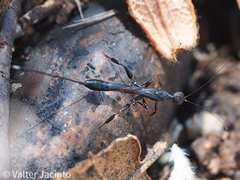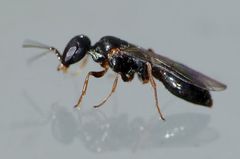Parasteropleurus perezii

Insecta Parasteropleurus perezii is a remarkable insect species endemic to the Comunidad Valenciana, a region known for its diverse and unique biodiversity. This species belongs to the family Tettigoniidae, commonly referred to as katydids or bush crickets. Parasteropleurus perezii, also locally known as "chicharra de Pérez," is distinctive for its adaptations to the Mediterranean habitat.
- Appearance: Parasteropleurus perezii is characterized by its elongated and slender body, which is typically green, blending seamlessly with the vegetation. Its body length ranges from 20 to 30 mm. It has long, thread-like antennae that are often longer than the body itself.
- Habitat: This species thrives in a variety of habitats within the Comunidad Valenciana, including scrublands, grasslands, and agricultural fields where it can camouflage easily among the foliage.
- Behavior: Like other Tettigoniidae, Parasteropleurus perezii is primarily a nocturnal creature. It is known for its distinctive and melodic stridulation, which it produces by rubbing its wings together. This sound is often heard during the late summer months, contributing to the ambient soundscape of the region.
- Diet: The diet of Parasteropleurus perezii consists mainly of plant matter. It feeds on leaves, stems, and flowers, which makes it an important part of the ecosystem in terms of plant population control.
- Reproduction: The mating season occurs in the late summer to early autumn. Females lay eggs in the soil or plant stems, where they remain dormant until the conditions are favorable for hatching, which typically occurs in spring.
Parasteropleurus perezii plays a crucial role in the local ecosystem by maintaining plant health and serving as a food source for various predators. Its presence is significant for maintaining the ecological balance, and it is a species of interest for both local and visiting entomologists in the Comunidad Valenciana.







